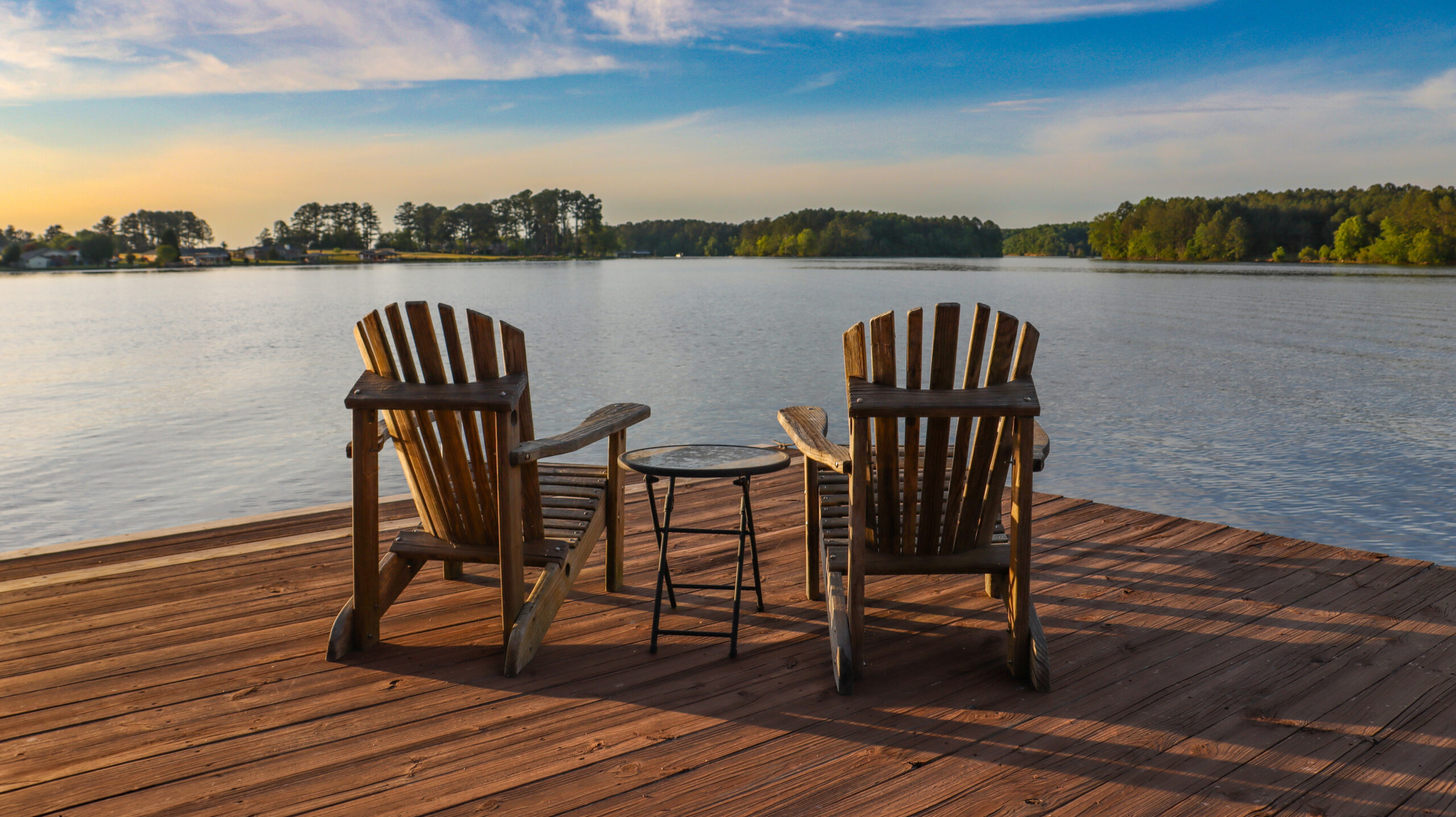Winter months can wreak havoc on your home if not prepared correctly. There are several ways you can winterize your house to prevent issues and damage along the way.
If you live around Lake Hartwell, you already know that our winters can be cold and unpredictable. Cold snaps and hard freezes can be surprisingly harsh and do a lot of damage.
Don’t find yourself in a rough spot! Take a look at these tips to winterize a lake home.
How To Winterize A House
Whether you are planning to continue living in the lake home or you spend winter somewhere else, you’ll still want to protect your home and belongings. Taking some time to prepare your home for winter will save you a lot of headaches in the long run.
Many of these tasks can be done yourself but don’t hesitate to contact a professional if you need some help.

Be ready for harsh weather by winterizing your home.
Winterizing your house – outdoor tasks
The exterior of your home is your main defense to cold winter months. Make sure your home is prepared by completing these outdoor tasks. And you don’t have to wait for the cold to get here either.
If you’re leaving long before frost is in the forecast, don’t hesitate to check these items off your list while it’s still sunny and warm outside.
Clean The Gutters
The purpose of gutters is to make sure that water travels where it supposed to and doesn’t damage to your foundation, siding, or windows. Keeping the channels clean also helps prevent water from leaking into your basement or foundation which could cause mold.
Hiring someone to clean your gutters is a good idea or you can do it yourself. If you do it yourself, you will want to make sure to remove all the dead leaves and other debris. You could do it by hand or use a leaf blower.
Once the gutters are clean, you will want to run water into them with a garden hose. It’s essential to make sure that there are no holes and water is exiting out of the downspouts.
Also, make sure that you have downspout splashes that are in a proper place to prevent the water from just sitting in one spot against the foundation.
It may be tempting to skip this step, but cleaning the gutters is crucial to winterizing your lake home.

Clean gutters are essential to protecting your home this winter.
Check Your Roof
Hail, wind and tree limbs can do significant damage to a roof. You will want to inspect it yourself or hire a professional. Most roofing companies will look at it for you for a minimal fee.
You will want to check for loose shingles, missing shingles, or cracks. Wood shake roofs should also be checked for breakage and dry rot. If you do find storm damage, check to see if your insurance company will cover the cost of the repairs.
Check the flashing and make sure that it isn’t bent or rusted. You will also want to check any caulking and make sure it is still adequately affixed and not cracked.
Pay attention to tree limbs, and if there are any low hanging limbs, you might want to hire a tree service to remove them. A tree limb can do a lot of damage if it falls from wind or heavy ice.
With snow and frozen rain approaching during the winter months, the weight can cause damage rather quickly. It’s imperative to keep your house and roof in good shape because it can save you lots of headaches and money down the road.
Prepare Your Patio And Garden
Bring in or cover any outdoor furniture and remove garden hoses from the spigot. This easy fix will prolong the life of your patio furniture and will keep it in good condition for spring. Disconnecting all garden hoses is vital because freezing temps will cause the pipes to burst.
Make sure each outside faucet is tightly closed. You can also put some foam faucet covers on each one to add some extra insulation. This is a quick and easy fix to help winterize your lake home.
Don’t forget about your boat! Make sure you winterize your boat before cold weather hits, too!
How To Winterize Your Home’s Interior
Once you have the exterior of your home prepared for winter, it’s time to move inside for a thorough check-up.

Keep your home cozy by checking windows and doors for drafts.
Check for Drafts
In order to winterize a house, you need to make sure it is properly insulated. One common location where cold air may be coming in is around your doors or windows. Drafty windows and doors can cost you a lot on your utility bill.
If you find drafts, place weather stripping or caulking to block the airflow. It’s essential to check for air around your baseboards and outlets, too, as you may need to add some additional caulking or trim pieces.
You want to keep that warm air in and the cold air out. Whether you are going to be staying in the home or leaving it for the winter, you shouldn’t skip this step.
Check Batteries
Check your smoke detector, carbon monoxide detector, and thermostat to make sure your batteries are working. If your thermostat quits working while it’s cold, your pipes could freeze.
Seeing as how we depend on these pieces of equipment daily, it’s always important to ensure your detectors are working correctly. One smart way to monitor your home’s heat is to get a Nest thermostat.
These thermostats work via a phone app through wifi, so you can know what’s going on even when you aren’t home.
Change A/C Filter and Inspect Furnace
Before it gets frigid, make sure your home’s heater is in good shape!
If you haven’t done it recently, go ahead and replace your A/C filter. This is typically an easy task that you can do yourself. Ideally, you should change the filter every couple of months depending on the style of filter you have.
Hiring a professional to service your heater is also recommended to test the heater appropriately. They can also test for carbon monoxide leaks while they’re there.

Replacing air filters is important for winterizing your home but also should be done throughout the year.
Prepare an Emergency Kit
If you’re a full-time resident at your lake house, you’ll need to be prepared in case you’re stuck inside for a few days. And you never know when an ice storm could come through and knock out the power.
One of the best ways to be prepared if you end up with no electricity is to purchase a generator. Even a small generator can supply enough electricity to power lights and a space heater.
You should also consider putting together an emergency kit. Be prepared with a store of water, non-perishable food, and medical supplies.
Flashlights, heavy blankets, and hand warmers are also a priority to keep on hand. If you have a baby, you are going to need baby supplies such as extra formula or baby food.
Don’t forget about your pets! Make sure you have plenty of extra food on hand for them.
You never know how long you may be without power, so it’s a good idea to have some games or books to pass the time.
What else is on your home winterizing list?
The best thing you can do to protect your home is to fix problems right away. Sometimes we don’t notice things until it’s too late. All of the tasks involved to winterize your lake home will be worth it!
Share your tips for winterizing a home below!







